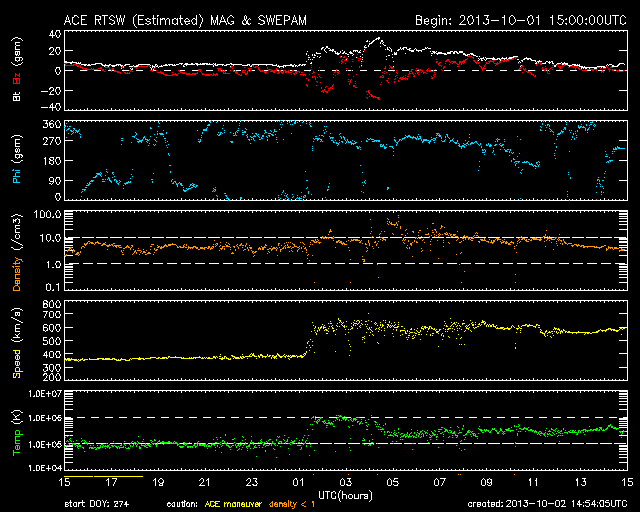October 2, 2013 Auroras
Grand Rapids, MN
A large filament eruption on the sun sent a pretty significant coronal mass ejection (CME-- click here to see it) toward Earth. It was forecast to hit late on October 2, but when I came home late from work on the evening of October 1, I got a Facebook message asking me what that was on the ACE SWEPAM (see the bottom of this page). It was now 8:40 PM, and the CME had passed the ACE spacecraft about 20 minutes ago. That meant I had only another 20 minutes or so before the northern lights would start to appear in the sky, so I had to scramble to get things ready. Indeed, by 9:00 PM, when I had things just about ready to go and was about to head out the door, I could see the northern lights from my front yard, starting to glow above the northern horizon. Due to the lack of time, to my closest shooting location on the north side of town and just barely out of the city lights so I could catch the earliest part of the show and timelapse the evolution. Bz had dropped to -20 nT in the wake of the CME impact, so there were pretty good odds that the aurora would expand from the northern into the southern sky at times, and I wanted to document that expansion.
Due to windy conditions, I decided to forego lake shooting since I expected the reflection off the water to be not very good. I chose the bog at Peterson Road. When I arrived, a green band had already established itself halfway between the Big Dipper and the northern horizon, and the northern horizon was also starting to show a hint of green.
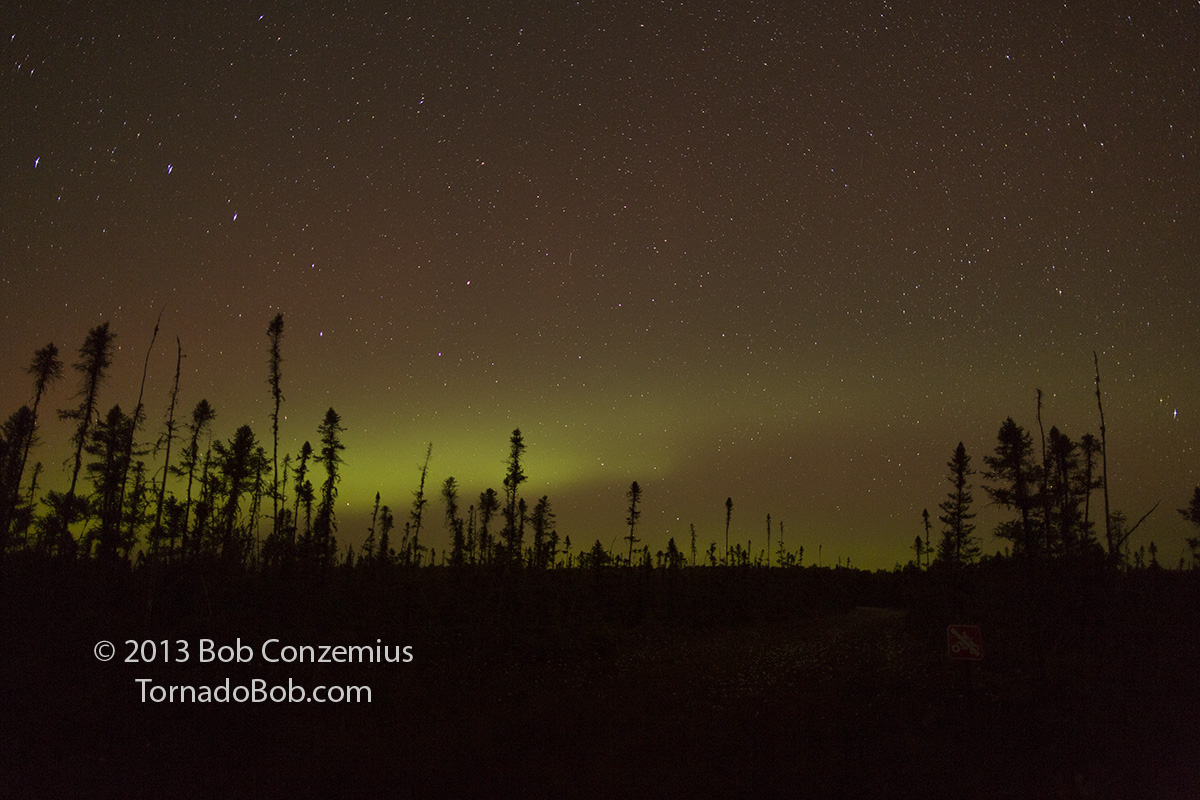 |
| The first aurora band of the evening. My first picture at 9:35 PM. |
The first band moved south at me as I took the first timelapse sequence while the northern horizon brightened considerably. However, Bz suddenly shot back north, reaching +20 nT, so I started to wonder if this show would be a short one. The best shows seem to occur when Bz fluctuates a lot but stays mostly south, but if the field moves north and stays there, the auroras will fade out. It was necessary to just wait and see.
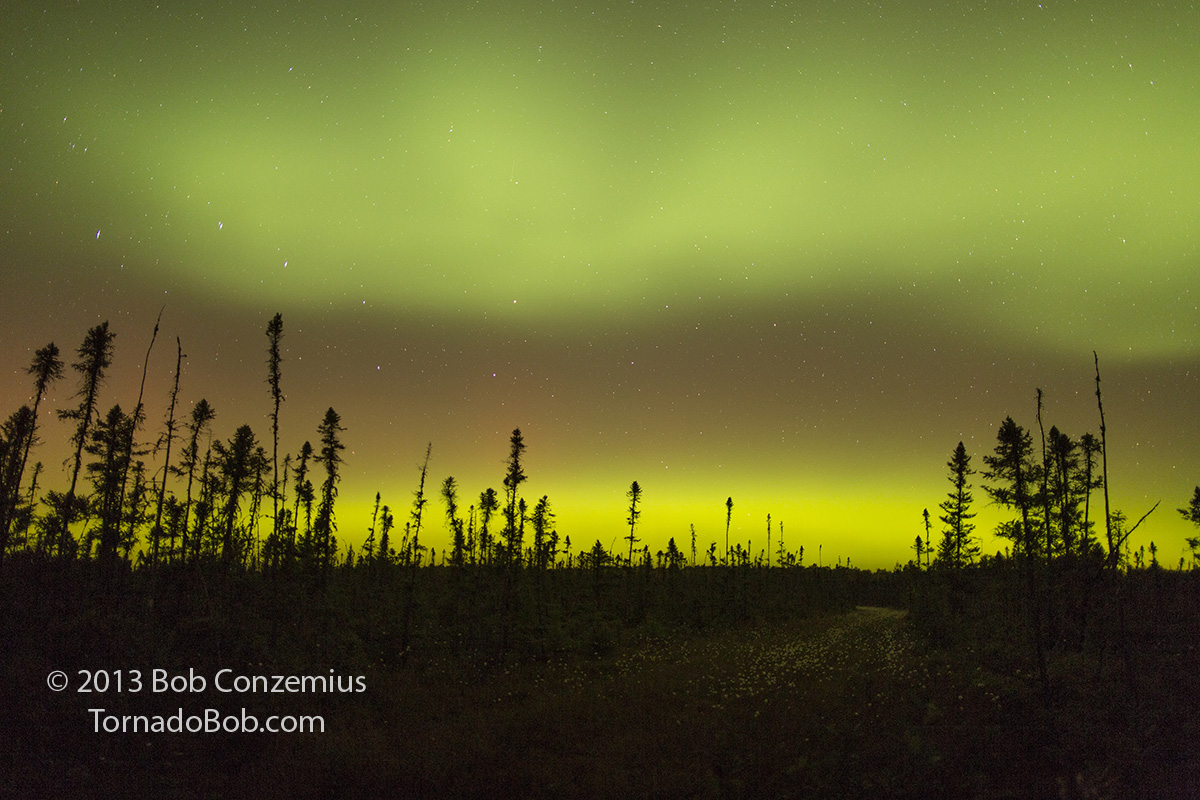 |
| The first aurora band moved overhead while another develops on the horizon.. |
The first band moved overhead and then to the south, where it started to dissipate. Bz moved back south to -20 nT. The northern band started moving off the horizon and south toward me. This started a period of about an hour of simply looking at the unstructured auroral oval. With Bz fluctuating wildly back and forth between +20 and -20 nT, there had to be a substorm coming, so I waited. By 11:20 PM local time, Bz had dropped to almost -30 nT, but there was still no wild expansion of the auroras.
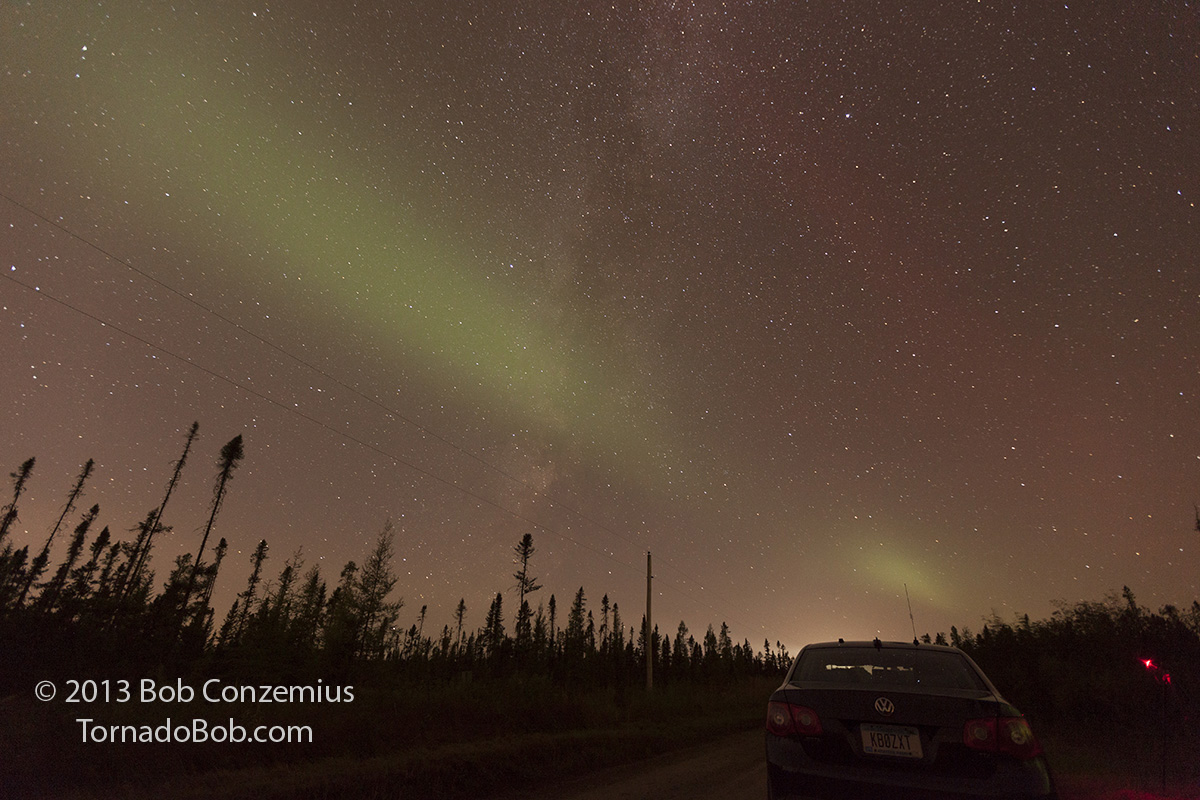 |
| The first band dissipates in the southern sky. This picture is looking west. |
 |
| The second band slowly brightens and moves toward me from the horizon. It is now 11:08 PM. |
When the stubstorm arrives, you had better be ready. It will usually provide advance notice of its arrival by a gradually brightening auroral oval. This first transition is tough to gauge because it happens very gradually, and there's no telling how bright it will get before the substorm starts. If you miss that phase, you have a lot less time to prepare if you've slept through the first phase. You'll suddenly notice a few subtle columns appearing in the band of green, and then in less than a minute, the aurora will be exploding in a variety of brightly colored bands.
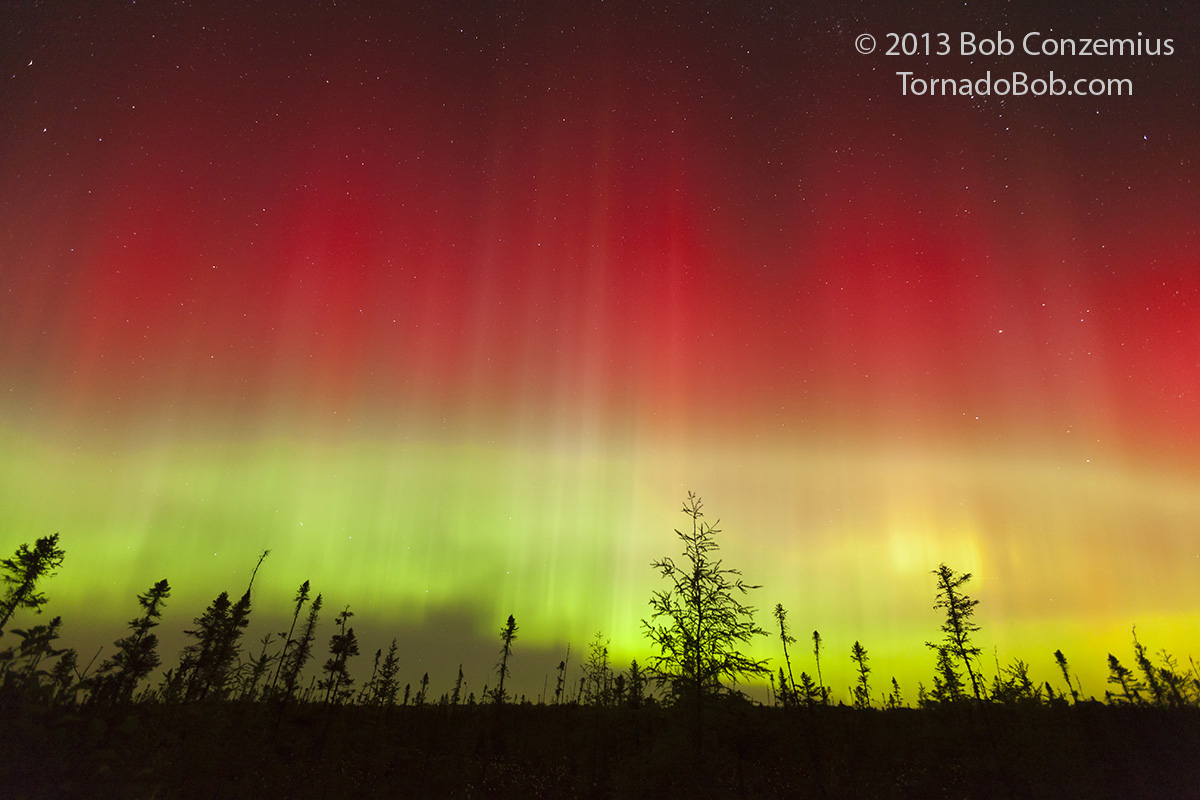 |
| 11:39 PM CDT. The second band explodes into color. |
Boom! Just before midnight, the substorm hit. The whole place got brighter, and I could work, more or less, without a flashlight. This is where the aurora shows a lot of structure and dances rapidly. The first minute or two of the substorm is probably the most visually spectacular. After that, the aurora spreads out into mostly green blotches covering a much larger portion of the sky.
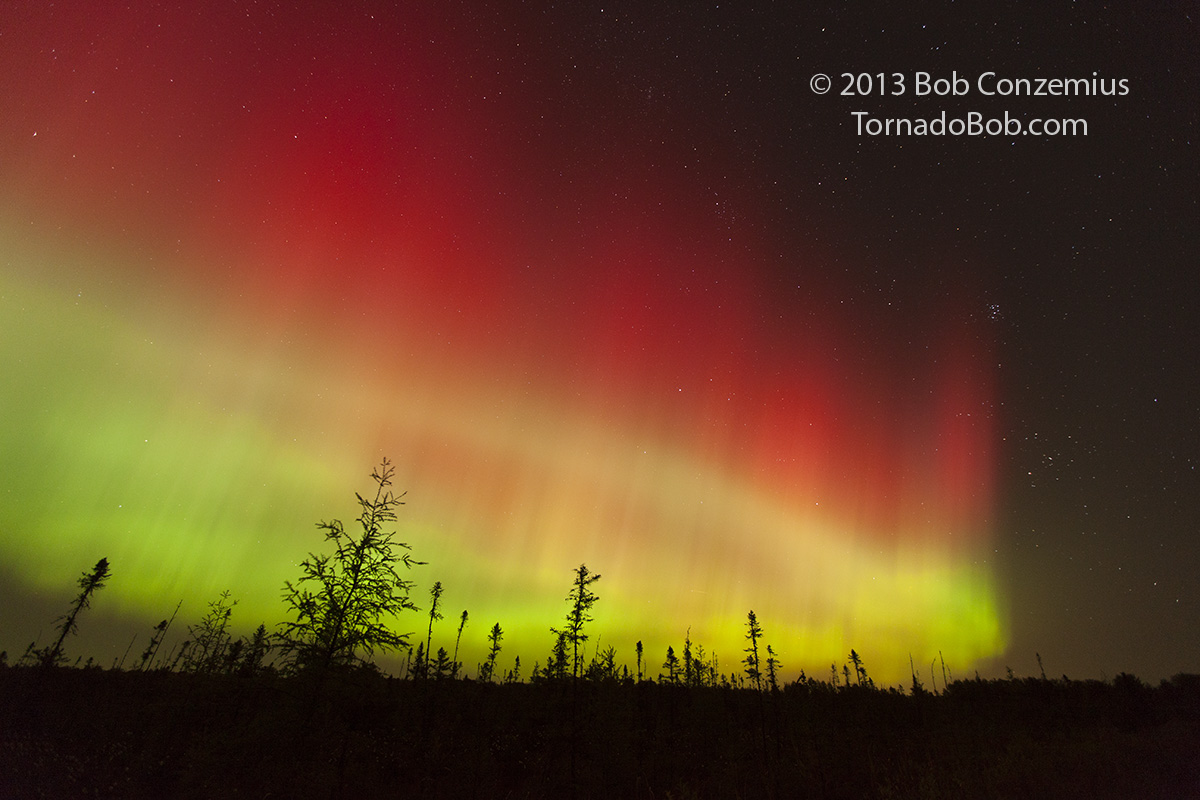 |
| Looking northeast about two minutes after the start of the substorm. |
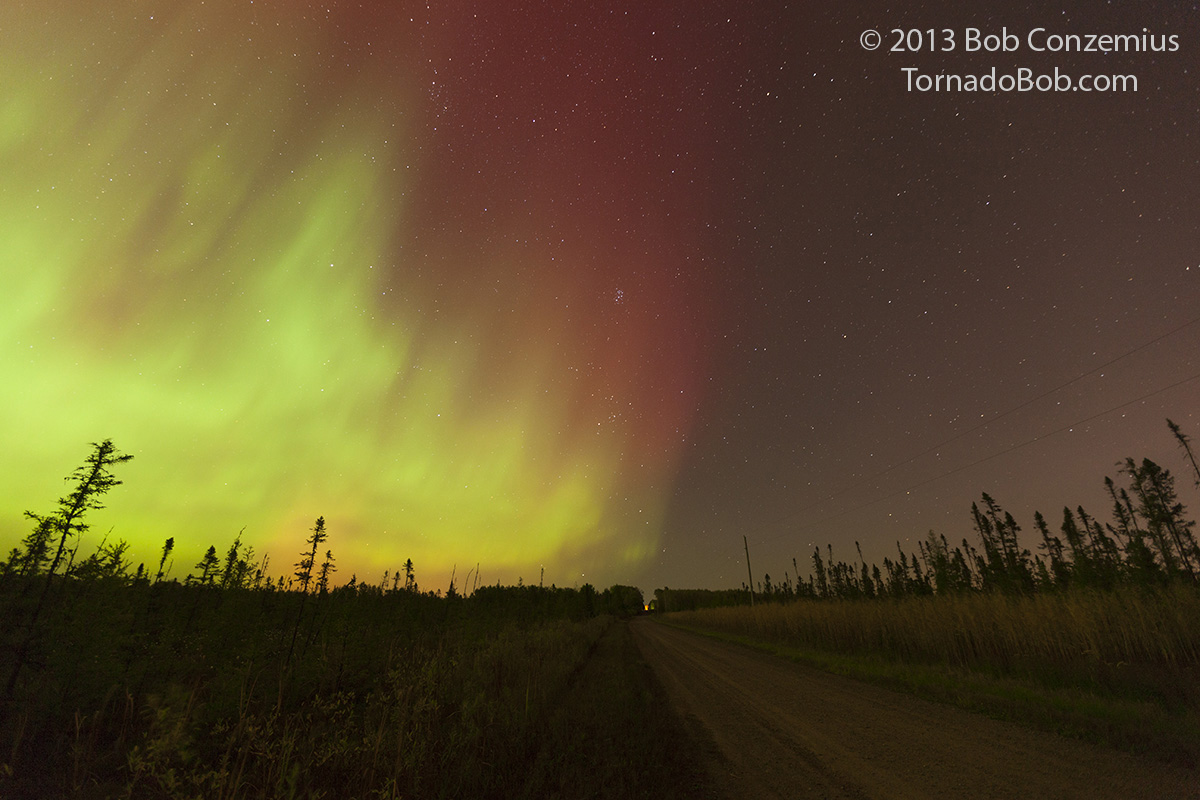 |
| The second band advances into the southern sky. |
I was prepared to point my camera high into the southern sky to capture a corona. The corona is really nothing different from any other type of aurora, but the viewing angle creates a drastically altered appearance. While active auroras typically look like columns in the sky, coronas appear to radiate outward from a single point. This is simply the view one gets when looking directly up the auroral columns. Because the magnetic field lines of Earth are tilted relative to the ground, and the electrons responsible for the auroras travel along the field lines, the columns do not stand straight up as you might think when you view columns that are to your north. They are actually tilted a about 10 to 20 degrees to the south, so the auroras have to spread a little into the southern sky in order for the observer to see a corona (it would be opposite that in the southern hemisphere). You can see about 10 to 20 degrees of tilt in the image above. If I point my camera into the southern sky about 10 to 20 degrees from vertical or 70 to 80 degrees above the southern horizon, I'll be looking straight up into any columns that form there.
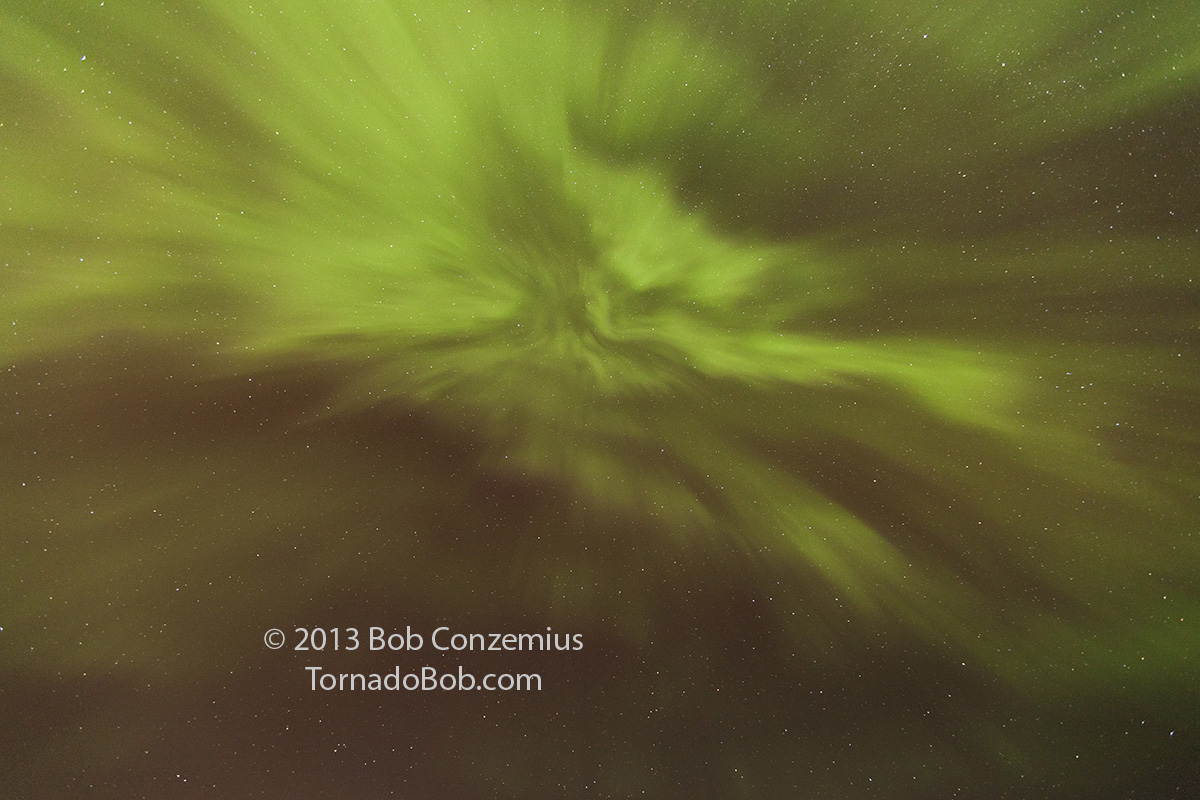 |
| I can now point the camera straight up and south to get a corona. |
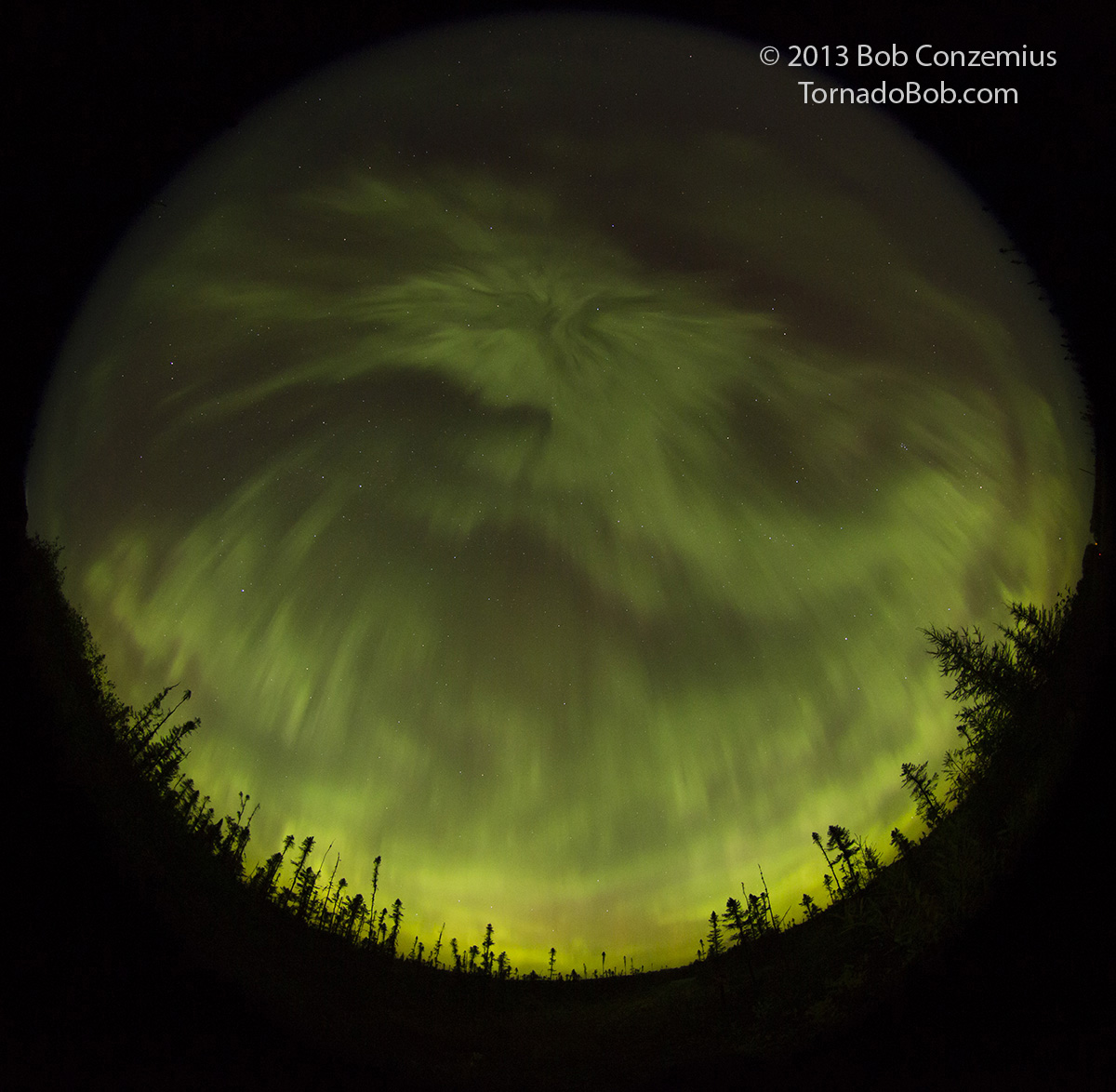 |
| Full dome shot taken with a fisheye lens set to 8mm. |
After I was done shooting the corona, I returned to other parts of the sky, shooting first straight west and then straight east. The substorm faded out, but as is typical of the aurora cycles during a geomagnetic storm, a flat green band of auroras reappeared, so that more than half the sky was a uniform, unstructured green. Some structure did return rather quickly this time, but it was not as dramatic as in the first substorm.
 |
| Looking straight west. |
 |
| A second expansion of auroras into the southern sky (looking due east) at 1:34 AM. |
As this second wave of auroras was spreading out into the sky, the memory cards on both my cameras became nearly full. Consequently, I decided to stop time-lapsing and go to a second location to concentrate more on stills than video. Also, the wind was calming down a little, so I thought it might be a good idea to try a lake. I drove 10 miles north to the boat landing on Pughole lake. While I was making the drive, the auroral oval narrowed a bit so that I now had a single band of auroras running from the eastern horizon, above and to the north, and then to the western horizon. It took me 25 minutes to pack up, drive, get set up again, and start shooting at my second location.
 |
| Looking east-northeast on Pughole Lake at 1:59 AM. |
I took a few stills at 16 mm and also tried some real time video with the f1.4 24mm lens. I normally make a point to check the infinity focus when I get the camera out of the car, so blurry images have become rare for me, but this time was different. I had already checked the focus and then shot one video clip, but at some point, between the first and the second clip, I bumped the focus ring without noticing (while putting the camera on tripod?), and the rest of my 24mm pictures were blurry. Strangely, when I discovered this and went to check the camera afterward, the focus was back on infinity. I have no idea what happened.
Meanwhile, the 16-35mm lens was fogging up. I had kept it outside longer at my first shooting location, which was considerably cooler than this lakeside location. The bog had become frosty by the time I left, but the lake was still pretty warm with water temperatures probably well above 50 degrees Fahrenheit. This combination of heat and moisture in the air and a cold lens made condensation inevitable, so I had to break out the hand warmers and wrap them around the lens to warm it up. It took me about 10 minutes getting it unfogged.
 |
| A blurry 24mm shot. |
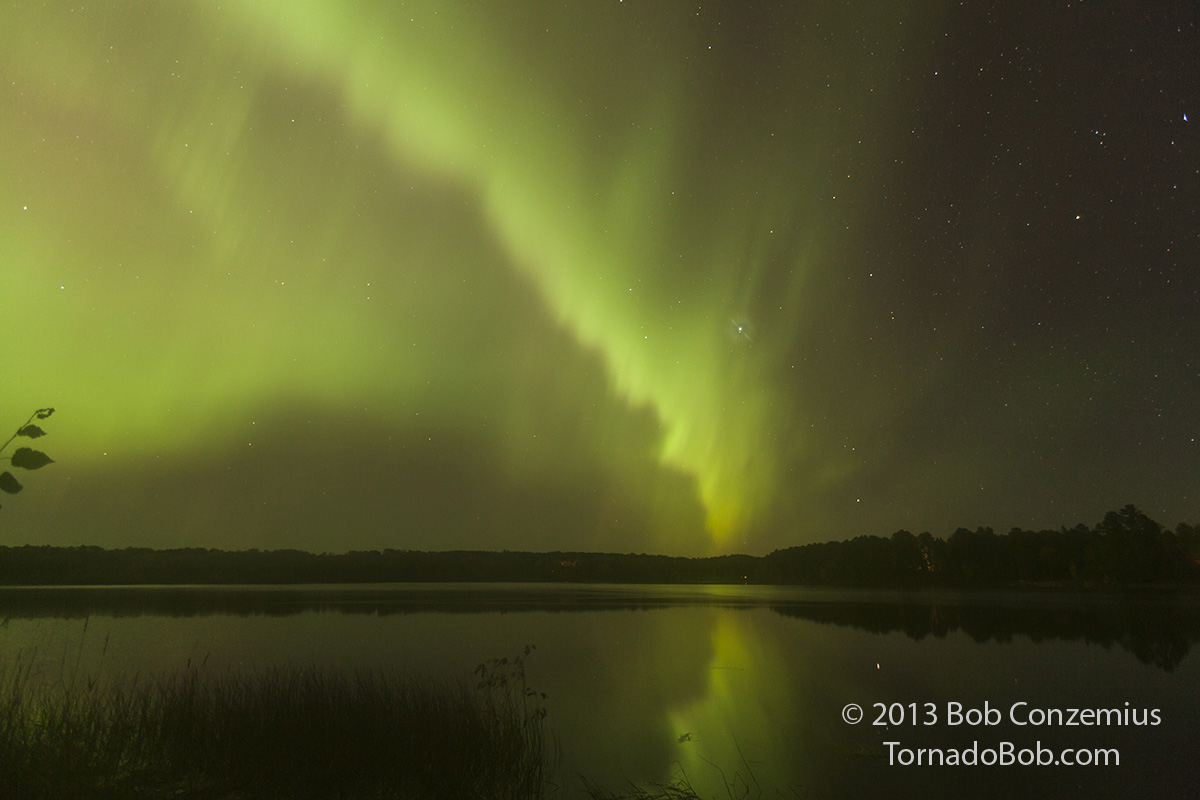 |
| Meanwhile, the 16-35mm lens fogged up. It's nothing that a "clarity" adjustment in Camera Raw can't help. |
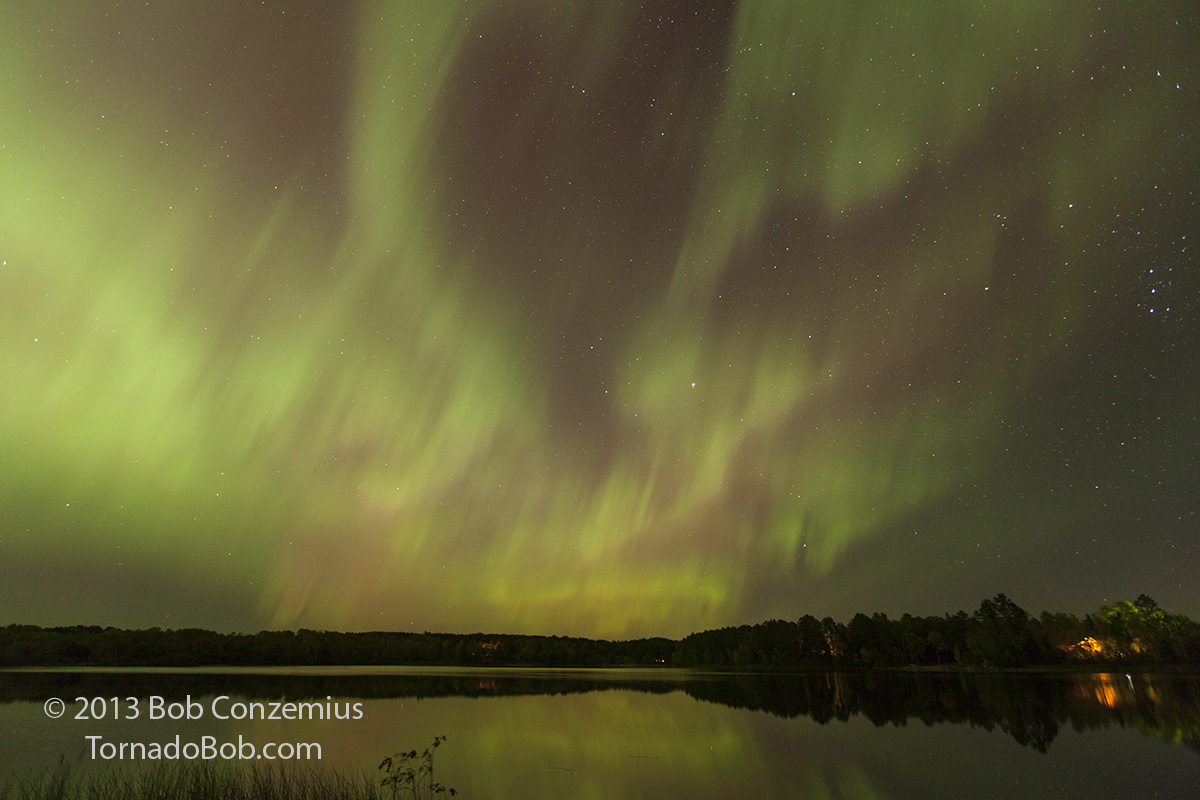 |
| The concentrated band then broke up and spread over more of the sky. |
By the time I had shown up at the second shooting spot, Bz had gone north to about +10 nT, but an hour and a half later, the auroras were still almost overhead. However, I was essentially out of card space, even on my spare card, so I decided to call it a night. As I drove home, the auroras retreated to the north, and by the time I went to bed around 5:00 AM, they no longer were distinguishable from my front yard. As it turned out, the show was very well timed for our nighttime hours.
You can see a time lapse and some of the real time video below.
|
ACE Spacecraft measurements of the interplanetary magnetic field, density, speed, and temperature. |
Back to Auroras | Home















